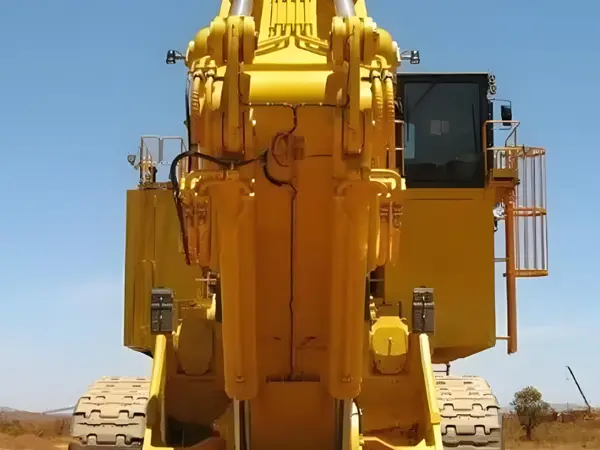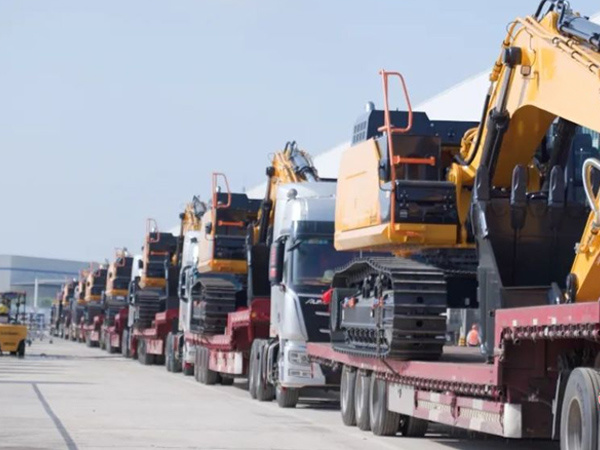Understanding the Power Ratings of Forestry Excavators: A Comprehensive Guide
Release time:
2025-03-27
Understanding the Power Ratings of Forestry Excavators Forestry excavators play a crucial role in the timber industry, aiding in tasks such as tree felling, land clearing, and logging. These powerful machines are designed specifically to handle the demands of forestry work, which often involves challenging terrains and heavy loads. Understanding the power ratings of these excavators is essential f
Understanding the Power Ratings of Forestry Excavators
Forestry excavators play a crucial role in the timber industry, aiding in tasks such as tree felling, land clearing, and logging. These powerful machines are designed specifically to handle the demands of forestry work, which often involves challenging terrains and heavy loads. Understanding the power ratings of these excavators is essential for making informed purchasing or operating decisions. This article delves into the intricacies of power ratings, their implications for performance, and essential factors that influence their effectiveness in forestry applications.
Table of Contents
1. The Importance of Power Ratings in Forestry Excavators
2. Key Components of Power Ratings
2.1 Engine Horsepower
2.2 Torque and Its Significance
2.3 Hydraulic Power
3. How Power Ratings Affect Operational Efficiency
4. Comparing Power Ratings Across Different Models
5. Factors Influencing Power Ratings
5.1 Engine Type and Size
5.2 Weight-to-Power Ratio
6. Selecting the Right Forestry Excavator Based on Power Ratings
7. Maintenance and Upkeep for Optimal Power Performance
8. Frequently Asked Questions (FAQs)
9. Conclusion
1. The Importance of Power Ratings in Forestry Excavators
Power ratings serve as a fundamental indicator of an excavator's capabilities, particularly in the forestry sector. These ratings enable operators and contractors to determine how well a machine can perform specific tasks, such as digging, lifting, and transporting heavy materials. In forestry, where conditions can often be unpredictable, having a machine with adequate power ensures that operations run smoothly and efficiently.
2. Key Components of Power Ratings
To fully grasp the concept of power ratings, it’s important to examine their key components. Understanding these elements will help users make better choices when selecting an excavator for forestry applications.
2.1 Engine Horsepower
Engine horsepower is perhaps the most recognized measure of an excavator’s power. It directly correlates to the machine's ability to perform tasks. In forestry applications, higher horsepower translates to greater efficiency in tasks such as tree removal and land clearing. Contractors need to assess the horsepower relative to the machine's intended use to ensure optimal performance.
2.2 Torque and Its Significance
Torque, measured in foot-pounds, is another critical component of power ratings. It represents the rotational force that the engine produces. In forestry tasks, where heavy objects are moved or manipulated, having a machine with high torque can significantly enhance performance. Understanding torque helps contractors choose machines that can handle demanding forestry jobs without bogging down.
2.3 Hydraulic Power
Hydraulic power is vital for the operation of various attachments and implements that forestry excavators may use. This power is measured in gallons per minute (GPM) and is crucial for operations involving grapples, shears, or other hydraulic tools. A higher hydraulic flow rate allows for quicker and more efficient task completion, which is particularly beneficial in time-sensitive forestry operations.
3. How Power Ratings Affect Operational Efficiency
The relationship between power ratings and operational efficiency is direct and significant. Machines with higher power ratings typically show improved performance in terms of speed, load capacity, and fuel efficiency. This is particularly important in forestry, where productivity can be impacted by machine downtime or inadequate power.
Contractors should evaluate power ratings to ensure that the excavator selected can comfortably handle the maximum expected workload. Machines that operate near their upper power limits may experience increased wear and tear, leading to higher maintenance costs and potential operational delays.
4. Comparing Power Ratings Across Different Models
When comparing forestry excavators, it is essential to analyze the power ratings across different models. Various manufacturers may have different specifications, making it crucial to conduct side-by-side comparisons. This helps identify which models offer not only the best horsepower and torque but also the most efficient hydraulic power, ensuring that the excavator will meet specific forestry needs effectively.
Features such as fuel efficiency, ease of maintenance, and reliability should also be considered alongside power ratings. Selecting a model that balances high power ratings with other operational features can enhance overall productivity and reduce long-term operational costs.
5. Factors Influencing Power Ratings
Several factors can influence the power ratings of forestry excavators. Understanding these factors can guide contractors in selecting the best machine for their needs.
5.1 Engine Type and Size
The engine type—whether diesel, electric, or hybrid—plays a significant role in determining power ratings. Diesel engines are commonly favored in forestry due to their robustness and fuel efficiency. Additionally, the size of the engine impacts horsepower and torque, with larger engines generally providing more power.
5.2 Weight-to-Power Ratio
The weight-to-power ratio is another critical aspect to consider. This ratio indicates how much weight the excavator can handle in relation to its power. A lower weight-to-power ratio typically yields better performance, especially in rugged terrains where maneuverability is essential. Evaluating this ratio can help ensure that the selected excavator meets the demands of forestry work without compromising efficiency.
6. Selecting the Right Forestry Excavator Based on Power Ratings
Choosing the right forestry excavator requires careful consideration of power ratings in relation to specific tasks. Contractors should assess the following:
- The type of work: Different tasks may require different power levels. For example, heavy logging may necessitate a machine with higher horsepower, while lighter grading jobs may require less.
- Terrain: The nature of the terrain can impact the choice of machine. A more powerful excavator may be required for steep or uneven landscapes.
- Attachments: Consideration should be given to the types of attachments that will be used. Machines with higher hydraulic power ratings will better support various implements.
Conducting thorough research and testing can ensure the selected excavator aligns with operational requirements, ultimately improving efficiency and productivity.
7. Maintenance and Upkeep for Optimal Power Performance
Regular maintenance is essential for preserving the power ratings of forestry excavators. Routine checks on engine performance, hydraulic systems, and overall machine health can prevent power degradation over time. Key maintenance practices include:
- Regular oil changes to ensure the engine runs smoothly.
- Inspecting hydraulic systems for leaks or wear to maintain optimal flow rates.
- Monitoring the condition of filters and replacing them as needed.
By adhering to a diligent maintenance schedule, contractors can maximize the performance of their excavators and prolong the machine's lifespan.
8. Frequently Asked Questions (FAQs)
What is the average power rating for a forestry excavator?
The average power rating for forestry excavators typically ranges from 80 to 150 horsepower, depending on the size and model of the machine.
How does hydraulic power impact performance?
Hydraulic power directly influences the ability of the excavator to operate various attachments efficiently, affecting overall productivity during forestry tasks.
What factors contribute to choosing the right excavator for forestry work?
Key factors include the type of work, terrain characteristics, and power ratings, along with machine weight and attachment compatibility.
What role does engine type play in power ratings?
Engine type affects fuel efficiency, power output, and suitability for heavy-duty tasks. Diesel engines are generally preferred for their performance in rugged applications.
How can contractors ensure optimal performance in forestry excavators?
Regular maintenance, appropriate attachment selection, and understanding power ratings can help contractors ensure optimal performance.
9. Conclusion
Understanding the power ratings of forestry excavators is essential for making informed decisions in the timber industry. By evaluating engine horsepower, torque, hydraulic power, and other relevant factors, contractors can select machines that enhance productivity and efficiency. Investing time in understanding these power ratings will ultimately lead to better operational outcomes and more successful forestry projects. As the industry evolves, staying informed about the latest advancements in excavator technology will further empower contractors to maximize their equipment's potential.





